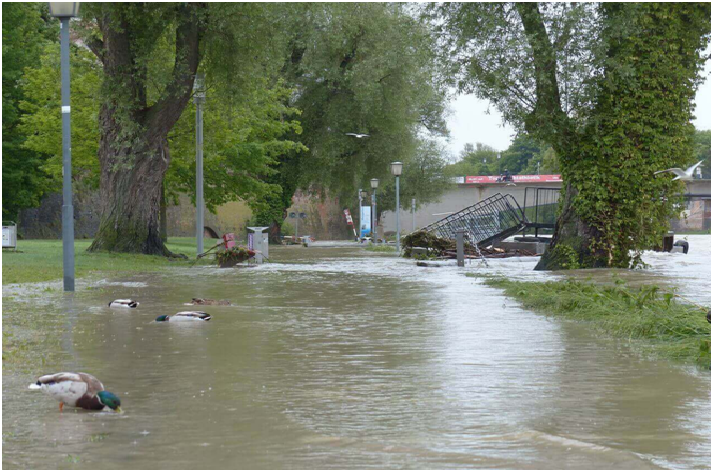
How to Prevent Your House from Flooding
Floods are a real danger to all of us, and they can strike without any warning. You don’t want to be stuck with a flooded house, especially if you were the victim of storm-surge flooding. Leaky pipes, clogged gutters, broken windows, and an ill-fitted roof can all contribute to a flood. Moreover, these problems might not always be within your control. They may be caused by the weather change or have gone untouched so long that they seem inevitable. Following are some tips on how to prevent your house from flooding.
Table of Contents
Use a flood alarm
Many different flood alarm systems are available today that are designed to let you know if flooding is occurring in your home or any cause of storm damage. These alarms will sound if any amount of water is detected in your basement, crawl space, or even if the humidity in your home gets too high.
These alarms will allow you to take necessary precautions before the water rises too high and begins causing damage to your home. The best way to combat flooding is to prevent it from occurring altogether, but if it does occur, then you’ll want to be sure that you’re protected against its effects. By using a flood alarm system, you can do just that.
Beware of plumbing leaks.
Plumbing leaks can cause your home to flood, and the damage can be devastating. That’s why you need to be on the lookout for signs that indicate a potential issue. Here are some of the most common warning signs:
- Sudden drops in water pressure throughout the home
- Water pooling in places like basements or laundry rooms
- Foul odors coming from drains or other fixtures
- Clogged toilets and drains
If you notice any of these issues, it’s important to take action as soon as possible. Closely monitor water usage over time, and ensure windows and doors are closed when heavy rain is expected. Call a professional plumber right away if your home continues to flood even after taking precautions.
Check your gutters to make sure they are not clogged.
Look at your gutters and make sure they are not clogged with leaves or anything that may cause water to back up into your house. If you see any signs of clogging, clean them out as soon as possible.
Make sure all of your doors and windows seal tightly.
Make sure there are no air leaks into your house or attic. You can do this by caulking around any doors and windows that have cracks or holes in them.
Have your roof inspected by a professional every year
Since most flooding damage is caused by water coming through the roof, it’s important to perform a professional inspection every year.
To keep your home safe from flooding:
- Keep gutters and downspouts clean so that water can flow freely.
- Replace broken or missing shingles.
- Check for loose flashings around chimneys and skylights. Flashings secure the areas where pipes and wires pass through the roof and prevent water from seeping in.
Find any holes in your roof and call a professional to patch them up.
Check your basement for storage and utility drains.
Check your basement for storage and utility drains. If any of these items are in areas that can flood, move them to higher ground. You should also check your sump pump and make sure it’s working properly.
Make sure that all your electrical systems are waterproofed and that your heating system is properly insulated, too. Don’t leave anything valuable in the basement, such as boxes or pictures; all you need there is a functional furnace, water heater, and other utilities.
Check with local building codes to see if you need a backup generator in power outages due to natural disasters like floods and hurricanes. Backup generators will supply electricity during blackouts to keep lights on, refrigerators running, water heaters operating, furnaces running, and the like—all things that will help you stay comfortable and safe during the flood.
Consider flood insurance
The best way to protect yourself and your property is by purchasing flood insurance if you live in one of these high-risk areas. The National Flood Insurance Program (NFIP) is designed to help people in flood-prone areas. It offers several types of policies, including:
A standard policy, which covers damage from tidal flooding and overflow from rivers and streams
An additional living expense (ALE) policy covers temporary housing expenses for up to two years if your home is damaged by flooding.
The NFIP offers several other flood policies, but above mentioned are the most common.
Conclusion
As a homeowner, you should always be prepared for the worst, and flooding is one such possibility. Flooding is one of the fastest-rising causes of property damage in the United States. A home can be flooded for various reasons, such as heavy rains, broken or damaged water pipes, or even a busted sump pump. What’s worse, once a home has been flooded, mold begins to grow and spread throughout the floors and walls of the house. You can follow the tips mentioned above to prevent your house from a flood. But if you think you need expert advice, you can always contact professional flood damage restoration in your surrounding areas. Expert technicians can help you restore your property.





No Comment